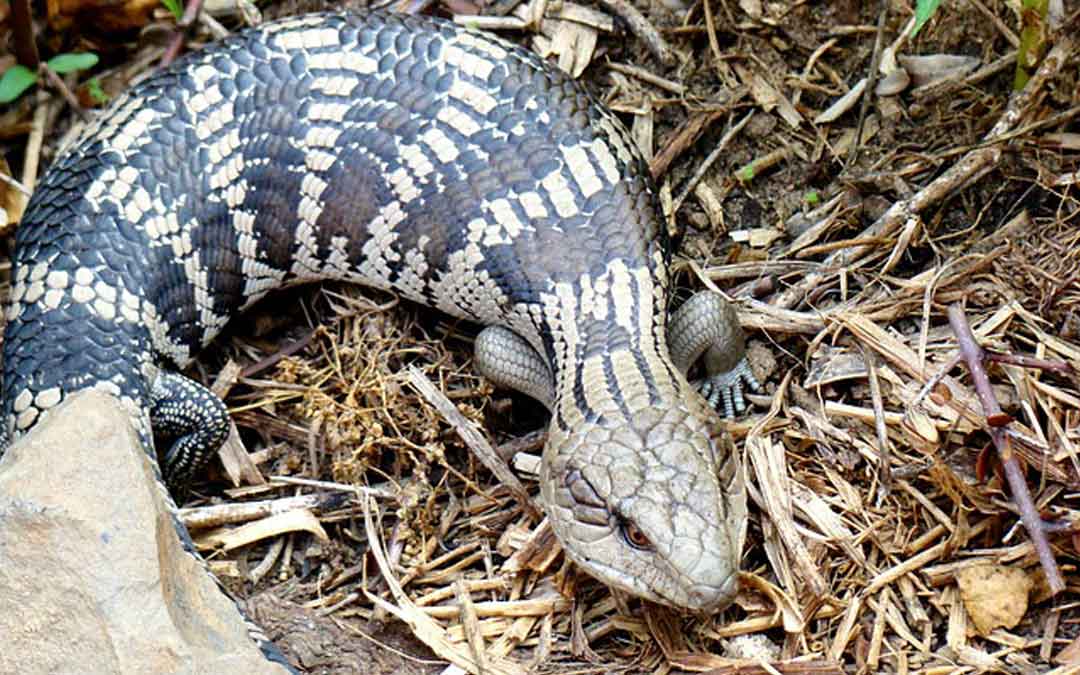Your surprising best friend in dealing with snails

Blue-tongue lizards are one of the most iconic reptiles in Australia. They are not very timid, have gorgeous markings and that distinctive blue tongue.
Actually there are six types of blue-tongues in Australia – including the Eastern Blue-Tongue Lizard (Tiliqua scincoides scincoides) that we have in Victoria. With bodies ranging in colour from pale grey to brown, this species is easily identified by their distinctive dark bands running across their scaled body. They can grow up to 60cm long and they feed on insects, beetles, flowers, leaves, fruits, and berries.
Blue-tongues are very territorial, so will often inhabit the same space for many years. I’ve had the same one living in my small garden since I moved in.
Males leave their home territory in spring to find females with whom to mate; the females give birth to live young in summer. Like all lizards, blue-tongues are cold blooded so need to bask in the sun.
Often seen in the driveways and gardens of Banyule, blue-tongues are not only very cute, but also your best friends in terms of dealing with one of our most common (especially this year!) garden pests – slugs and snails. The lizard’s strong jaws can crush through snail shells.
It’s tempting to use snail pellets in your garden, but it’s terrible for the lizards who will eat the poisoned snails and slugs and then die. Instead of using poison, make some beer traps for slugs and snails or collect them by hand at night with a torch.
I’d also encourage you to make your garden welcoming for blue-tongue lizards.
- Provide places for them to shelter and bask; logs, old terracotta pipes or broken pots, flat rocks, old pavers or bricks, and piles of stones are all great.
- Plant some local grasses and groundcovers for them to eat and live within (check out the local species at LaTrobe’s Indigenous plant nursery).
- Keep pets away.
- Check the area before you dig with your spade or whipper snip, and try not to run them over in your driveway!
Provide a low shallow bowl of water for them to drink from.
While they may hiss or try and scare you away with their blue tongue, these lizards are best admired but otherwise left alone. They aren’t venomous and won’t hurt you or your pets. In fact, the most damage they are likely to do to you is to bite or scratch you if you try and handle them. At this time of year I often look over to the stepping stones while I’m in the garden and see my mate lounging in the sun. I like to think he’s digesting a tummy full of slugs that were heading towards my beans.
Written by Jen Willis.
